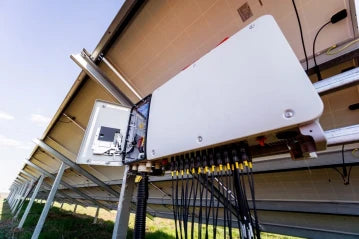
In today's rapidly evolving energy landscape, inverters play a pivotal role in harnessing renewable energy and providing backup power solutions. Two popular types of inverters are solar inverters and normal inverters. If you're considering investing in solar energy solutions, it's crucial to understand the differences between these inverters to make an informed decision. In this blog post, we will delve into the disparities between solar inverters and normal inverters, helping you choose the right solution for your energy needs.
Solar Inverters: Harnessing the Power of the Sun
Solar inverters are specifically designed for photovoltaic (PV) systems, which convert sunlight into usable electricity. These inverters act as the crucial bridge between your solar panels and the power grid. They come equipped with features and capabilities tailored to optimize solar energy usage.
One of the key features of solar inverters is Maximum Power Point Tracking (MPPT). This technology ensures that the solar panels operate at their maximum efficiency, maximizing the energy output. Solar inverters also provide grid synchronization and anti-islanding protection, ensuring the safe and efficient integration of solar power into the electrical grid.
Moreover, solar inverters offer reactive power control, enabling efficient energy flow and power factor adjustment. They boast impressive conversion rates and high efficiency, enabling you to make the most of the solar energy harvested. There are different types of solar inverters available, including string inverters, microinverters, and power optimizers, each with their unique advantages and applications.
Normal Inverters: Conventional Power Backup Solutions
Normal inverters, also known as conventional inverters, serve as reliable backup power solutions for various applications. They are widely used in households, offices, and industries to provide uninterrupted power during blackouts and to supplement off-grid power needs. Normal inverters can be powered by external sources or batteries, offering flexibility and versatility.
These inverters excel in providing voltage regulation, ensuring a stable power supply to protect sensitive electronic devices from voltage fluctuations. They also facilitate battery charging and discharging, allowing you to store power for use when needed. Normal inverters are available in different types, such as square wave inverters, modified sine wave inverters, and pure sine wave inverters, each offering varying levels of power quality and compatibility with different electronic devices.
Key Differences between Solar Inverters and Normal Inverters
1. Energy Source
Solar inverters harness the power of the sun, converting solar energy into usable electricity. Normal inverters, on the other hand, rely on external power sources or batteries to provide backup power.
2. Design and Construction
Solar inverters are specifically designed to optimize solar power extraction, ensuring maximum efficiency from PV systems. Normal inverters are more generalized in their design, catering to a wide range of power backup applications.
3. Functionality and Features
Solar inverters offer specialized features like MPPT, grid synchronization, and reactive power control to maximize solar energy utilization. Normal inverters excel in voltage regulation, battery management, and providing uninterrupted power supply during outages.
4. Efficiency and Conversion Rates
Solar inverters are engineered to achieve high conversion efficiency, allowing you to make the most of the solar energy generated. Normal inverters' efficiency varies based on their type and quality.
5. Choosing the Right Inverter for Your Needs
To choose the right inverter for your energy needs, it's essential to consider several factors. For solar inverters, evaluate your PV system size and capacity requirements. Look for inverters with high efficiency and robust warranties, ensuring long-term performance. Additionally, consider grid connection requirements if you plan to feed excess solar power back into the electrical grid.
For normal inverters, assess your power backup needs and load requirements. Determine the battery capacity and charging capabilities that align with your usage patterns. Furthermore, consider the output waveform preferences, as sensitive electronic devices may require pure sine wave inverters for optimal performance.
Conclusion
Understanding the differences between solar inverters and normal inverters is crucial when exploring solar energy and backup power solutions. Solar inverters are specialized for extracting maximum energy from solar panels, while normal inverters offer versatile backup power options. By considering your specific energy requirements and the features offered by each type of inverter, you can make an informed decision that aligns with your goals. Whether you choose to go solar or require a reliable backup power source, the right inverter will be the backbone of your energy system, providing efficiency and peace of mind for years to come.


0 Kommentare